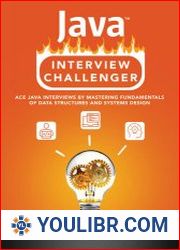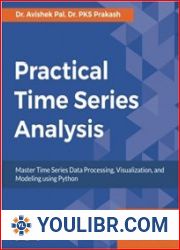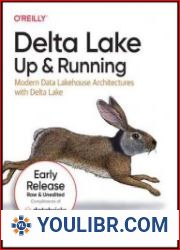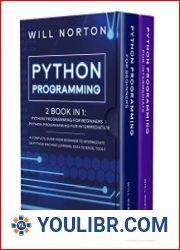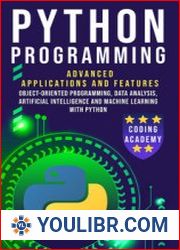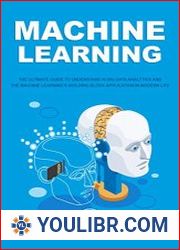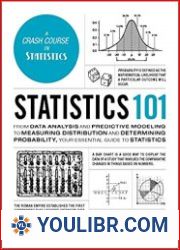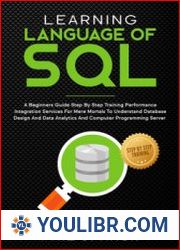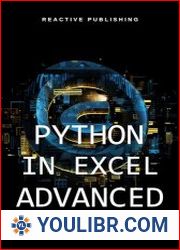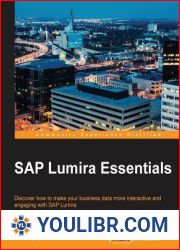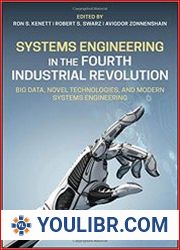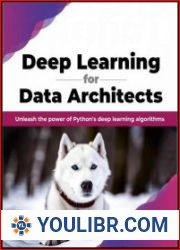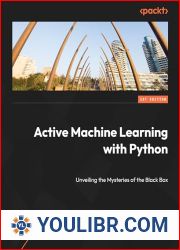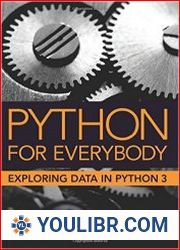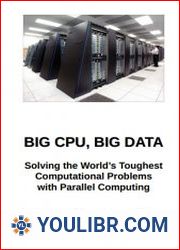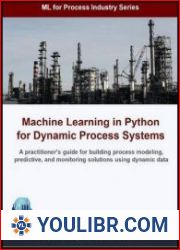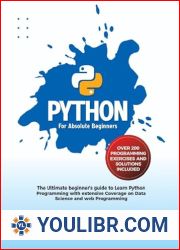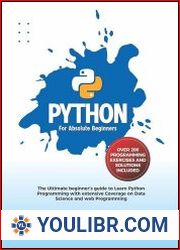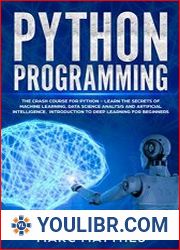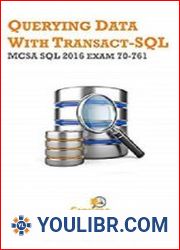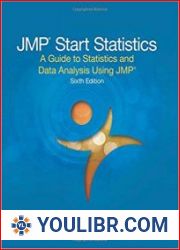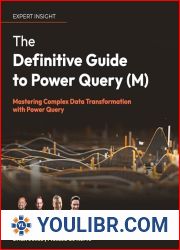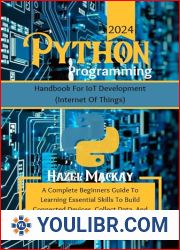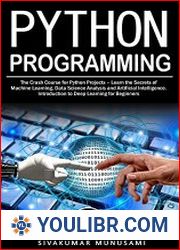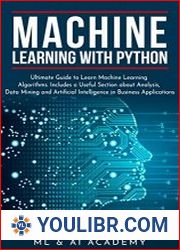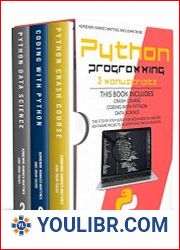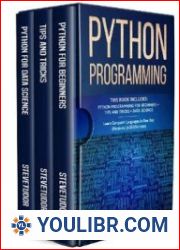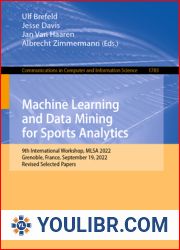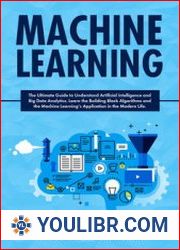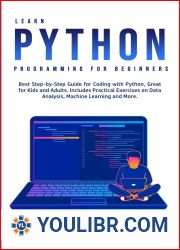
BOOKS - Data in Context: Models as Enablers for Managing and Using Data (The Enterpri...

Data in Context: Models as Enablers for Managing and Using Data (The Enterprise Engineering Series)
Author: Bas van Gils
Year: August 1, 2023
Format: PDF
File size: PDF 5.8 MB
Language: English

Year: August 1, 2023
Format: PDF
File size: PDF 5.8 MB
Language: English

Book Data in Context Models as Enablers for Managing and Using Data - The Enterprise Engineering Series Introduction: In today's digital age, data has become an increasingly important asset for many organizations. However, managing and utilizing this data effectively requires a deep understanding of its underlying processes and principles. This book, "Data in Context Models as Enablers for Managing and Using Data - The Enterprise Engineering Series provides a comprehensive overview of how to model data in a way that allows for effective exploitation and utilization in every respect. It combines scientific semiotics, relational models, and pragmatic theories to provide a coherent framework for understanding and managing data. Part I: Understanding Data The first part of the book focuses on understanding data and its various aspects. It begins with an introduction to the field of semiotics, which is the study of signs and symbols, and how they are used to convey meaning. This is followed by an exploration of the relational model, which provides a framework for understanding the relationships between different data entities. Additionally, the chapter covers normalization, which is the process of organizing data to minimize redundancy and dependency. Finally, the section concludes with a discussion on the importance of understanding data design and structure. Chapter 1: Introduction to Semiotics * In this chapter, we explore the basics of semiotics and how it applies to data management. * We discuss the role of signs and symbols in conveying meaning and how they can be used to represent data.
Book Data in Context Models as Enablers for Managing and Using Data - The Enterprise Engineering Series Введение: В современную цифровую эпоху данные становятся все более важным активом для многих организаций. Однако эффективное управление и использование этих данных требует глубокого понимания лежащих в их основе процессов и принципов. В этой книге «Данные в контекстных моделях как средства управления и использования данных - серия Enterprise Engineering» представлен всесторонний обзор того, как моделировать данные таким образом, чтобы обеспечить эффективное использование и использование во всех отношениях. Он объединяет научную семиотику, реляционные модели и прагматические теории, чтобы обеспечить согласованную основу для понимания и управления данными. Часть I: Понимание данных Первая часть книги посвящена пониманию данных и их различных аспектов. Она начинается с введения в область семиотики, которая представляет собой изучение знаков и символов, и того, как они используются для передачи смысла. Затем следует исследование реляционной модели, которая обеспечивает основу для понимания взаимосвязей между различными сущностями данных. Кроме того, глава охватывает нормализацию, которая представляет собой процесс организации данных для минимизации избыточности и зависимости. Наконец, раздел завершается обсуждением важности понимания дизайна и структуры данных. Глава 1: Введение в семиотику * В этой главе мы исследуем основы семиотики и то, как она применяется к управлению данными. * Мы обсуждаем роль знаков и символов в передаче смысла и то, как их можно использовать для представления данных.
Book Data in Context Models as Enablers for Managing and Using Data - The Enterprise Engineering Series Introduction : À l'ère numérique, les données deviennent un atout de plus en plus important pour de nombreuses organisations. Toutefois, la gestion et l'utilisation efficaces de ces données exigent une compréhension approfondie des processus et des principes qui les sous-tendent. Ce livre intitulé « s données dans les modèles contextuels en tant qu'outils de gestion et d'utilisation des données - Enterprise Engineering Series » présente un aperçu complet de la façon de modéliser les données de manière à assurer une utilisation et une utilisation efficaces à tous les égards. Il combine la sémiotique scientifique, les modèles relationnels et les théories pragmatiques pour fournir un cadre cohérent pour la compréhension et la gestion des données. Partie I : Comprendre les données La première partie du livre traite de la compréhension des données et de leurs différents aspects. Il commence par une introduction au domaine de la sémiotique, qui est l'étude des signes et des symboles, et comment ils sont utilisés pour transmettre le sens. Il s'ensuit une étude du modèle relationnel qui fournit une base pour comprendre les relations entre les différentes entités de données. En outre, le chapitre traite de la normalisation, qui est un processus d'organisation des données pour minimiser la redondance et la dépendance. Enfin, la section se termine par une discussion sur l'importance de comprendre la conception et la structure des données. Chapitre 1 : Introduction à la sémiotique * Dans ce chapitre, nous examinons les fondements de la sémiotique et la façon dont elle s'applique à la gestion des données. * Nous discutons du rôle des signes et des symboles dans la transmission du sens et de la façon dont ils peuvent être utilisés pour représenter les données.
Book Data in Context Models as Enablers for Managing and Using Data - The Enterprise Engineering Series Introducción: En la era digital actual, los datos se están convirtiendo en un activo cada vez más importante para muchas organizaciones. n embargo, la gestión y el uso eficaces de esos datos requieren una comprensión profunda de los procesos y principios que los sustentan. Este libro, «Datos en modelos contextuales como medio de gestión y uso de datos - Enterprise Engineering Series», ofrece una visión general completa de cómo modelar los datos de manera que permitan un uso y una utilización eficientes en todos los aspectos. Combina semiótica científica, modelos relacionales y teorías pragmáticas para proporcionar una base coherente para la comprensión y gestión de datos. Parte I: Comprensión de los datos La primera parte del libro trata sobre la comprensión de los datos y sus diferentes aspectos. Comienza con la introducción en el campo de la semiótica, que es el estudio de signos y símbolos, y cómo se utilizan para transmitir significado. Luego sigue un estudio de un modelo relacional que proporciona una base para entender las relaciones entre las diferentes entidades de datos. Además, el capítulo abarca la normalización, que es un proceso de organización de datos para minimizar la redundancia y la dependencia. Por último, la sección concluye con un debate sobre la importancia de entender el diseño y la estructura de los datos. Capítulo 1: Introducción a la semiótica * En este capítulo exploramos los fundamentos de la semiótica y cómo se aplica a la gestión de datos. * Discutimos el papel de los signos y símbolos en la transmisión de significado y cómo pueden ser utilizados para representar datos.
Book Data in Text Models as Enablers for Managing and Using Data - The Enterprise Engineering Series Introduzione: nell'era digitale moderna, i dati diventano un asset sempre più importante per molte organizzazioni. Tuttavia, la gestione e l'utilizzo efficiente di questi dati richiedono una profonda comprensione dei processi e dei principi sottostanti. Questo libro, «Dati in modelli contestuali come strumenti di gestione e utilizzo dei dati - Enterprise Engineering», fornisce una panoramica completa di come modellare i dati in modo da garantire l'utilizzo e l'utilizzo efficiente in tutti i modi. Unisce semiotica scientifica, modelli relazionali e teorie pragmatiche per fornire una base coerente per la comprensione e la gestione dei dati. Parte I: Comprensione dei dati La prima parte del libro è dedicata alla comprensione dei dati e dei loro diversi aspetti. Inizia con l'introduzione all'area semiotica, che è l'esplorazione dei caratteri e dei caratteri, e il modo in cui vengono utilizzati per trasmettere il significato. Seguite lo studio del modello relazionale, che fornisce una base per comprendere le relazioni tra le diverse entità dei dati. Inoltre, il capitolo comprende la normalizzazione, che rappresenta un processo di organizzazione dei dati per ridurre al minimo ridondanza e dipendenza. Infine, la sezione si conclude con una discussione sull'importanza della comprensione del design e della struttura dei dati. Capitolo 1: Introduzione alla semiotica * In questo capitolo esploriamo le basi della semiotica e il modo in cui viene applicata alla gestione dei dati.
Buchdaten im Kontext Modelle als Enabler für die Verwaltung und Nutzung von Daten - Die Enterprise Engineering Series Einleitung: Im heutigen digitalen Zeitalter werden Daten für viele Organisationen zu einem immer wichtigeren Gut. Die effiziente Verwaltung und Nutzung dieser Daten erfordert jedoch ein tiefes Verständnis der zugrunde liegenden Prozesse und Prinzipien. Dieses Buch „Daten in Kontextmodellen als Mittel zur Verwaltung und Nutzung von Daten - Enterprise Engineering Series“ bietet einen umfassenden Überblick darüber, wie Daten so modelliert werden können, dass eine effektive Nutzung und Nutzung in jeder Hinsicht gewährleistet ist. Es kombiniert wissenschaftliche Semiotik, relationale Modelle und pragmatische Theorien, um eine kohärente Grundlage für das Verständnis und die Verwaltung von Daten zu schaffen. Teil I: Daten verstehen Der erste Teil des Buches widmet sich dem Verständnis von Daten und ihren verschiedenen Aspekten. Es beginnt mit einer Einführung in das Feld der Semiotik, die das Studium von Zeichen und Symbolen ist, und wie sie verwendet werden, um Bedeutung zu vermitteln. Es folgt eine Untersuchung des relationalen Modells, das eine Grundlage für das Verständnis der Beziehungen zwischen verschiedenen Dateneinheiten bietet. Darüber hinaus behandelt das Kapitel die Normalisierung, also den Prozess der Datenorganisation zur Minimierung von Redundanz und Abhängigkeit. Schließlich schließt der Abschnitt mit einer Diskussion über die Bedeutung des Verständnisses von Design und Datenstruktur. Kapitel 1: Einführung in die Semiotik * In diesem Kapitel untersuchen wir die Grundlagen der Semiotik und wie sie auf das Datenmanagement angewendet wird. * Wir diskutieren die Rolle von Zeichen und Symbolen bei der nnübertragung und wie sie zur Darstellung von Daten verwendet werden können.
''
Veri Yönetimi ve Kullanımı İçin Etkinleştiriciler Olarak Bağlam Modellerinde Kitap Verileri - Kurumsal Mühendislik Serisi Giriş: Günümüzün dijital çağında, veri birçok kuruluş için giderek daha önemli bir varlık haline geliyor. Bununla birlikte, bu verilerin etkin yönetimi ve kullanımı, temel süreçlerin ve ilkelerin tam olarak anlaşılmasını gerektirir. "Data in Context Models as a Means of Managing and Using Data - Enterprise Engineering Series" (Veri Yönetimi ve Kullanımı Aracı Olarak Bağlam Modellerinde Veri - İşletme Mühendisliği Serisi) başlıklı bu kitap, verilerin her açıdan verimli kullanılmasını ve kullanılmasını sağlayacak şekilde nasıl modelleneceğine dair kapsamlı bir genel bakış sunmaktadır. Verileri anlamak ve yönetmek için tutarlı bir çerçeve sağlamak için bilimsel göstergebilim, ilişkisel modeller ve pragmatik teorileri birleştirir. Bölüm I: Verileri Anlamak Kitabın ilk bölümü verileri ve çeşitli yönlerini anlamakla ilgilidir. İşaret ve sembollerin incelenmesi ve anlam iletmek için nasıl kullanıldıkları olan göstergebilim alanına bir giriş ile başlar. Bunu, farklı veri varlıkları arasındaki ilişkileri anlamak için bir çerçeve sağlayan bir ilişkisel model çalışması izler. Buna ek olarak, bölüm, artıklığı ve bağımlılığı en aza indirmek için verileri düzenleme süreci olan normalleştirmeyi de kapsamaktadır. Son olarak, bölüm veri tasarımı ve yapısını anlamanın önemi üzerine bir tartışma ile sona ermektedir. Bölüm 1: Göstergebilime Giriş * Bu bölümde, göstergebilimin temellerini ve veri yönetimine nasıl uygulandığını araştırıyoruz. * İşaret ve sembollerin anlam iletmedeki rolünü ve verileri temsil etmek için nasıl kullanılabileceğini tartışıyoruz.
بيانات الكتب في نماذج السياق كعوامل تمكين لإدارة البيانات واستخدامها - مقدمة سلسلة هندسة المؤسسات: في العصر الرقمي اليوم، أصبحت البيانات أحد الأصول ذات الأهمية المتزايدة للعديد من المؤسسات. بيد أن الإدارة الفعالة لهذه البيانات واستخدامها يتطلبان فهما شاملا للعمليات والمبادئ الأساسية. يقدم هذا الكتاب، «البيانات في نماذج السياق كوسيلة لإدارة واستخدام البيانات - سلسلة هندسة المؤسسات»، نظرة عامة شاملة على كيفية تصميم البيانات بطريقة تمكن من الاستخدام والاستخدام بكفاءة من جميع النواحي. إنه يدمج السيميائيات العلمية والنماذج العلائقية والنظريات البراغماتية لتوفير إطار عمل متماسك لفهم البيانات وإدارتها. الجزء الأول: فهم البيانات يتناول الجزء الأول من الكتاب فهم البيانات وجوانبها المختلفة. يبدأ بمقدمة إلى مجال السيميائيات، وهو دراسة العلامات والرموز، وكيف يتم استخدامها لنقل المعنى. يتبع ذلك دراسة نموذجية علائقية توفر إطارًا لفهم العلاقات بين كيانات البيانات المختلفة. وبالإضافة إلى ذلك، يغطي الفصل عملية التطبيع، وهي عملية تنظيم البيانات للتقليل إلى أدنى حد من التكرار والتبعية. وأخيرا، يختتم الفرع بمناقشة أهمية فهم تصميم البيانات وهيكلها. الفصل 1: مقدمة إلى السيميائيات * في هذا الفصل، نستكشف أساسيات السيميائيات وكيفية تطبيقها على إدارة البيانات. * نناقش دور العلامات والرموز في توصيل المعنى وكيف يمكن استخدامها لتمثيل البيانات.







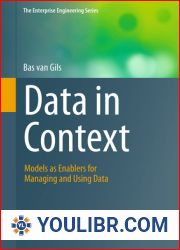
 49
49  2 TON
2 TON

